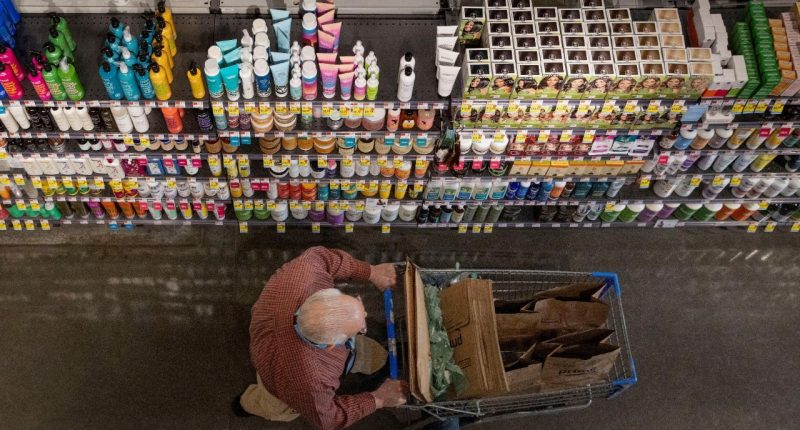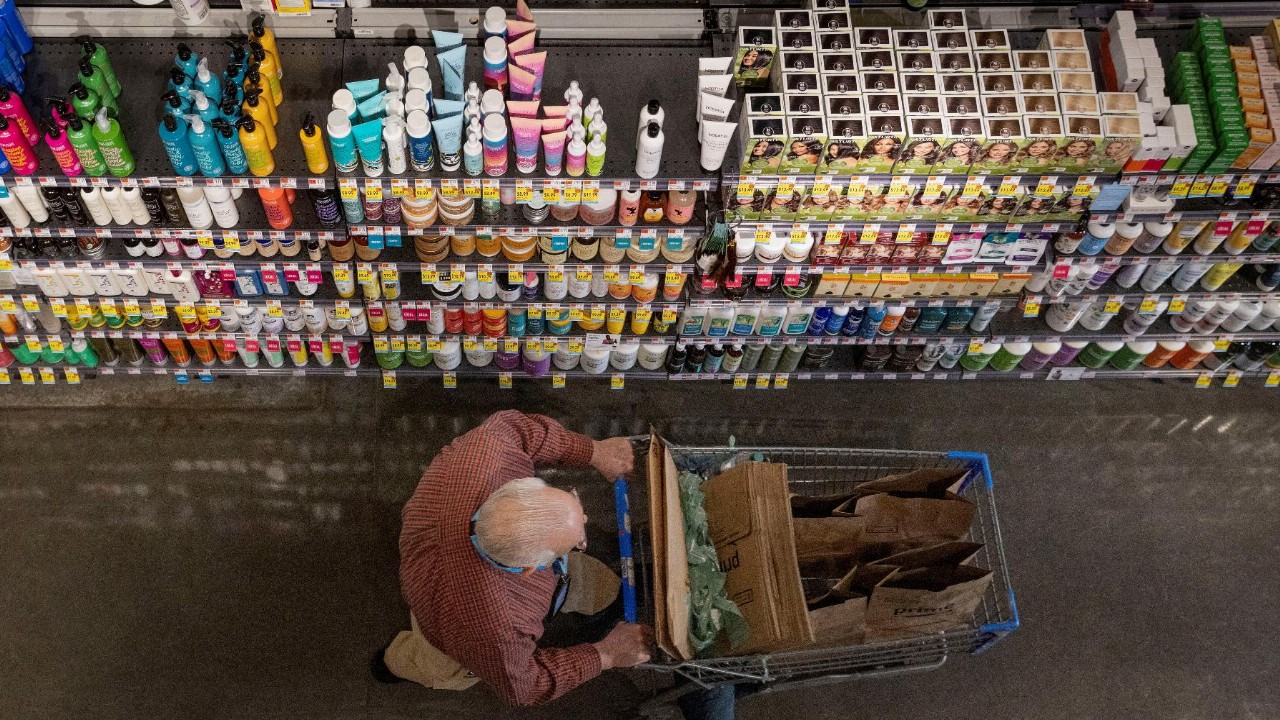- Consumer price growth in the United States still sits around a 40-year high, but a slow-down in April suggests inflation may have peaked last month
- Inflation increased by just 0.3 per cent over April, which is the slowest growth seen since August last year
- Year-on-year, US consumer prices have increased by 8.3 per cent, meaning the Federal Reserve is likely to move forward with its planned 50-point rate hikes in June and July
- Falling petrol prices largely influenced the slowdown in inflation, though this was offset by stark rises in rent and airline ticket prices
- Meanwhile, China’s ‘zero-COVID’ policy that has sent tens of millions of people into lockdown is compounding Russian-Ukraine war woes and global supply chain issues
Consumer price growth in the United States still sits around a 40-year high, but a slow-down in April suggests inflation may have peaked last month.
New inflation data from the Labor Department shows the consumer price index (CPI) increased by 0.3 per cent in April, though soaring rent and airline ticket prices offset a fall in the price of petrol.
This marks the smallest monthly gain in the consumer price index since August last year following a 1.2-per-cent month-on-month increase in March — the largest advance since September 2005.
Inflation now sits at 8.3 per cent in the US year-on-year, meaning the Federal Reserve is likely to move forward with its planned rates hikes over 2022 as it battles to get rising consumer prices under control.
Chief economist at FWDBONDS Christopher Rupkey told Reuters the US’ battle with inflation was not over yet, but markets could “breathe a sigh of relief” that it seemed like things were not going to get any worse.
“The Fed can stay on plan with 50 basis points rate hikes in June and July and there is no reason to move more expeditiously to fight inflation,” Mr Rupkey said.
Of course, while the 6.1 per cent fall in petrol prices over April played a large role in the slowing inflation rate in April, fuel prices have begun to rise once more. According to fuel price analyst group AAA, US petrol averaged around US$4.40 (A$6.38) per gallon on Wednesday after hovering just above US$4 over April.
This means the deceleration in inflation is potentially only temporary.
The White House has blamed Russia’s February invasion of Ukraine for the surging prices, though inflation was already rising before the war began in light of global supply chain issues and a long period of low interest rates following years of pandemic relief.
Now, China’s ‘zero-COVID’ policy that has sent tens of millions of people into lockdown and shut down large sections of the Chinese economy is threatening to add to the global supply chain and inflation woes.
In Australia, annual headline CPI inflation rose to 5.1 per cent over the March quarter, with underlying inflation at 3.7 per cent.







